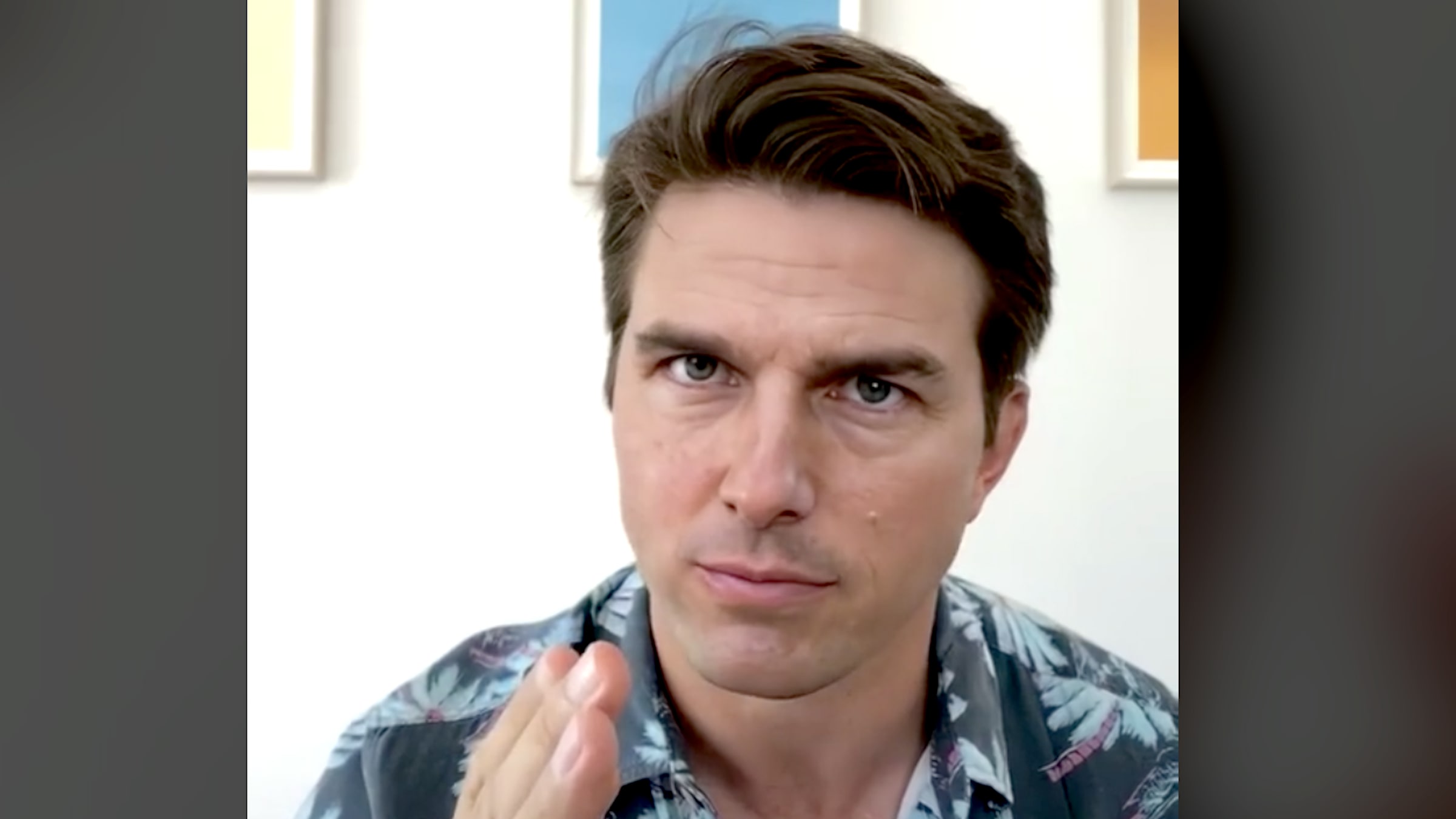Shockingly Real Tom Cruise Deepfakes Are Invading TikTok

TikTok
Be afraid. Be very afraid.
Three days ago, a TikTok account going by @deeptomcruise began posting video clips of the Hollywood actor Tom Cruise doing everything from golfing, to tripping and telling a joke in what appears to be a men’s clothing store in Italy, to performing a magic trick with a coin. In each of the three videos, Cruise delivers his signature maniacal laugh—you know, the one he repeatedly unleashed in that batty Scientology recruitment video years back—before launching into some sort of bit, and in all of them, it looks just like Cruise. Only it’s not Cruise.
There are a few giveaways, of course. @deeptomcruise appears to be much younger than the 58-year-old Xenu disciple, and many inches taller (the real Cruise is 5’6” on a good day). Also, his voice is hollow and scratchy, a la that scene in Face/Off where John Travolta-as-Nicolas Cage is trying to adjust his vocals to that Cage-ian timbre. Still, the Cruise TikToks managed to bewilder and horrify a number of people. As photographer Lauren White wrote, “Deep fakes are getting scary good and taking over TikTok. Every public figure should just be on there with a verified account—even if they don’t want to make content—to make it easier to identify their fakes.”
@deeptomcruise is trading in “deepfakes,” a term combining “deep learning” and “fake” that MIT Sloan describes as “a specific kind of synthetic media where a person in an image or video is swapped with another person's likeness.” It’s quite alarming that even a fake Cruise is gaining popularity on TikTok, the social media destination of choice for Gen Z, given Cruise’s role as Scientology’s most famous recruiter—and a man who, according to Scientology whistleblower Leah Remini, personally punished fellow Scientologists.
The @deeptomcruise account has amassed 166K followers and counting. (TikTok did not respond to requests for comment, including whether deepfakes violated their terms of service, by publication.)
MIT Sloan provided the following description of how one creates a “deepfake”:
To make a deepfake video, a creator swaps one person’s face and replaces it with another, using a facial recognition algorithm and a deep learning computer network called a variational auto-encoder [VAE]. VAEs are trained to encode images into low-dimensional representations and then decode those representations back into images. For example, if you wanted to transform any video into a deepfake with Oscar-winning movie star Nicolas Cage, you’d need two auto-encoders—one trained on images of the actor’s face, and one trained on images of a wide diversity of faces.
The images of faces used for both training sets can be curated by applying a facial recognition algorithm to video frames to capture different poses and lighting conditions that naturally occur. Once this training is done, you combine the encoder trained on the diverse faces with the decoder trained on Nicolas Cage’s faces, resulting in the actor’s face on someone else’s body.
This technology sprung up on Reddit in 2017, and has resulted in a number of viral fake news clips pushed by the troll-ish followers of former President Trump, including one of Nancy Pelosi appearing to slur her speech.
In August of 2019, a deepfake video went viral of Bill Hader slowly morphing into Tom Cruise during a 2008 David Letterman appearance. Its creator, a Slovakian 3D artist who went by “Tom,” told The Guardian that he’d made about twenty deepfake videos using an open-source program, with each taking him between 3-5 days to create.
“It’s an arms race: someone is creating deepfakes, someone else is working on other technologies that can detect deepfakes,” Tom said. “I don’t really see it as the end of the world like most people do.”
